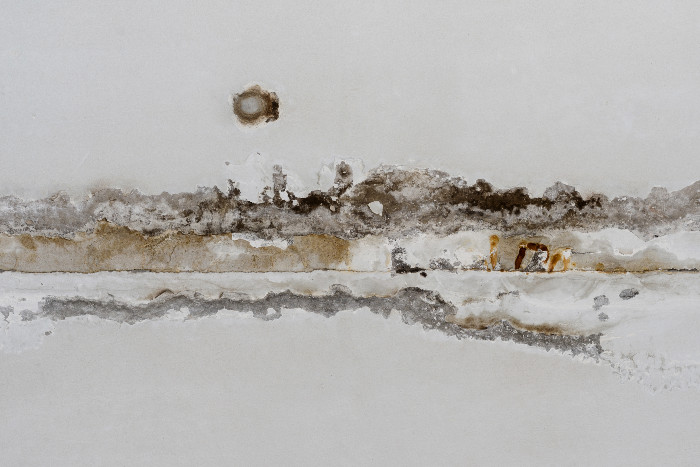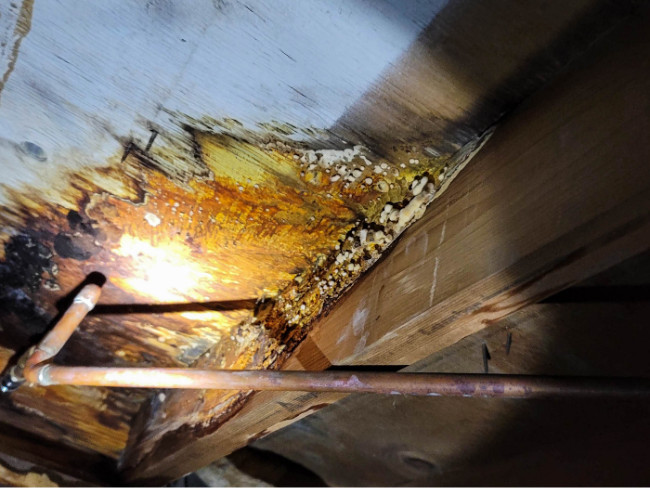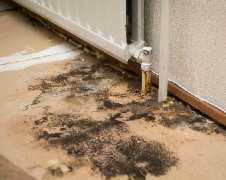How Can Mold Affect Employee Productivity?
Mold in the workplace environment is a serious issue for both employers and employees. The presence of mold creates an unsafe work environment, and may even increase employee stress and decrease productivity. A safe work environment and high air quality is essential for employee performance and workplace satisfaction, so if you want to take good care of your human resources, you need to be vigilant about mold. 
Causes of Mold
Mold is everywhere, naturally occurring in the environment indoors and outdoors. The cause of mold in its most basic form is the mold spores that constantly exist everywhere and are unavoidable. Mold spores become a problem when they begin to reproduce rapidly, becoming toxic to the air and damaging to property. Moist, warm conditions accelerate problems with mold growth, and many materials provide a food source. For example, damp sheetrock, wet carpet, and spoiling food are all examples of materials that feed mold growth.
Mold grows when invisible spores float through the air and find a place to land and feed. Suitable materials and a warm, moist environment are perfect conditions for mold growth. Leaks in the roof, leaking water pipes, large spills, and damp carpets due to tracking in rain or snow are all examples of everyday situations where mold may have an opportunity to grow.
Signs of Mold
Often starting inside walls, underneath the flooring, or in other tucked-away places, mold growth may begin long before anyone sees it. One telltale sign of hidden mold is a faint or strong musty odor. The presence of a musty smell with no visible source indicates potential mold growth.
Another sign of unseen mold growth is sick building syndrome. Sick building syndrome refers to multiple people who work in the same building environment experiencing acute symptoms such as dizziness, nausea, headaches, or fatigue.
Mold and mildew may be hiding in common places where moisture or water collects, like window sills, HVAC drip pans, or tile grout. Break room refrigerators or areas where a large spill or water damage may also have mold or mildew growth. Mildew is a type of mold but it is typically more powdery and surface level. Mold is more insidious and harder to remove.
Effects of Mold
Health Risks
Mold is a potential health risk for anyone who works in or around a mold infestation. Mold exposure symptoms include:
- Asthma: signs of asthma are shortness of breath, chest tightness, or wheezing.
- Allergies: symptoms include sneezing, nasal congestion, or runny nose. Red, itchy or watery eyes are another allergic reaction to mold.
Often mold allergy symptoms are confused with regular, seasonal allergies. One way to know if allergies are due to being exposed to mold or the result of seasonal allergies is timing. If it is not typical allergy season for someone who usually experiences allergies or if someone who does not typically experience allergy symptoms suddenly starts experiencing them, these are indications that something in the building may be triggering allergies.
Hypersensitivity pneumonitis is a mold-related illness that mimics pneumonia, and antibiotics cannot treat it. Its unresponsiveness to treatment is an indication of mold exposure, and other health effects include dizziness, nausea, fatigue, and headaches.
Effects on Productivity
When left untreated, mold growth can create an unhealthy work environment resulting in decreased productivity. Severe mold-related health symptoms may lead to increased amounts of time off needed. When inside the building, symptoms such as nausea and dizziness may slow productivity by general malaise or an increased need for breaks.
Mold remediation may temporarily decrease productivity due to a disruption in the workplace. When mold remediation is necessary, standard safety protocol recommendations suggest completing work in unoccupied work areas. With small to medium-sized remediation jobs, work may continue in spaces adjacent to the area affected by mold. However, work areas and adjacent rooms should be unoccupied for larger mold contamination areas and areas requiring extensive remediation. 
Prevent Mold in Commercial Buildings
There are ways to prevent extensive mold growth in commercial buildings. The Centers for Disease Control shares specific protocols building managers and owners can implement to prevent and respond to mold issues. Including these suggestions in your building maintenance routine will help create a healthy, safe work environment.
- Implement a routine inspection plan for places prone to mold growth, such as air conditioning drip pans, break room appliances, bathrooms, windowsills, or air vents.
- Repair all leaks quickly. For example, roof leaks, pipe and faucet leaks, appliances, and windows.
- Control humidity.
- Maintain the building HVAC system.
- Call in professionals for significant water damage and cleanup.
Contact AdvantaClean
If you suspect mold in your commercial building, contact AdvantaClean today! It is critical to call professionals like AdvantaClean when you need help dealing with mold-related issues. Our expert mold specialists are equipped to find and eliminate the root cause of mold. In addition, our professionals have the tools and training necessary to perform mold removal quickly and safely. We understand the need for expedited service when mold is suspected in the workplace because you need to ensure the health and safety of your employees. We are available 24 hours a day, seven days a week for emergencies.
Contact AdvantaClean online or by calling 877.800.2382 to schedule an appointment.

